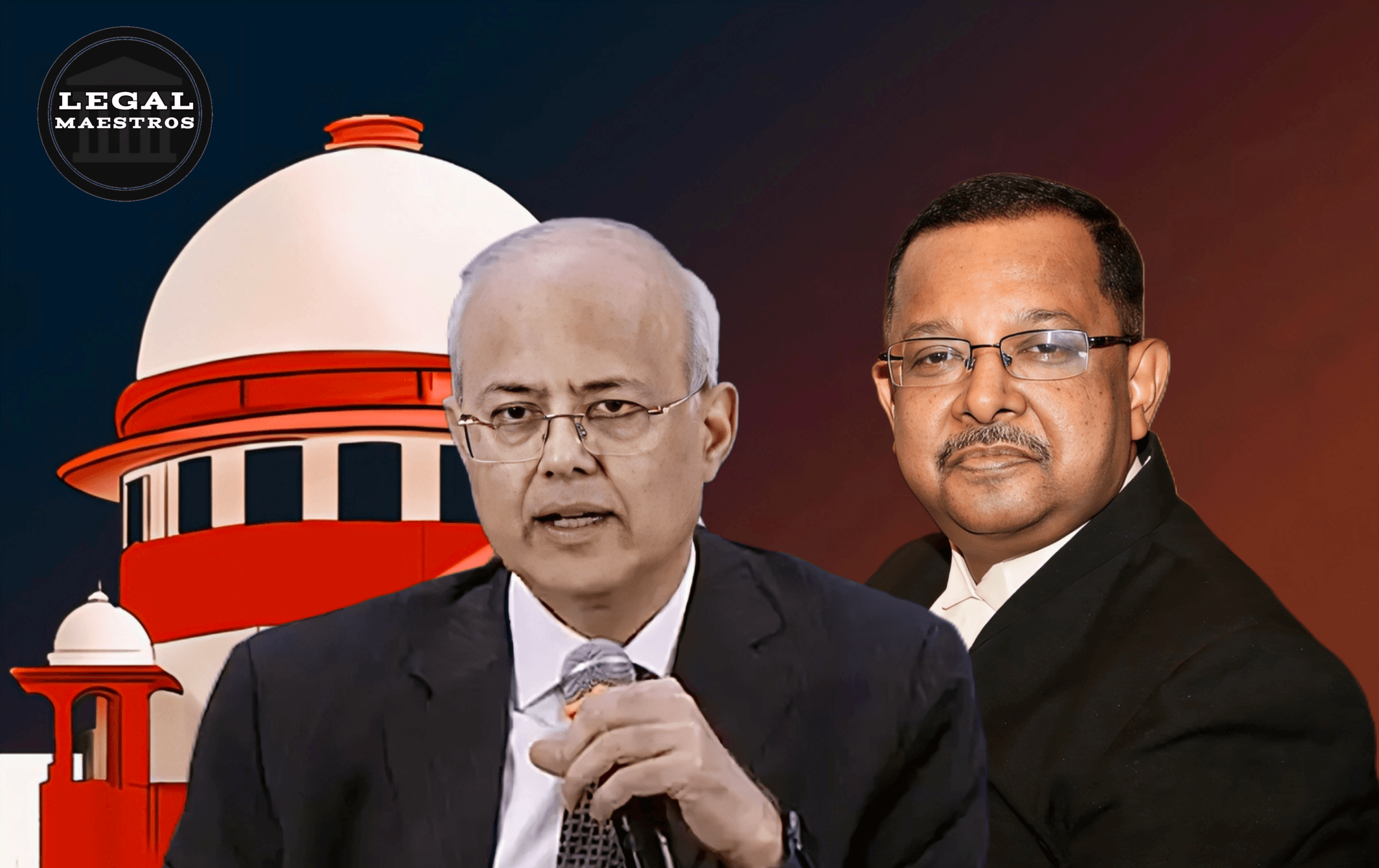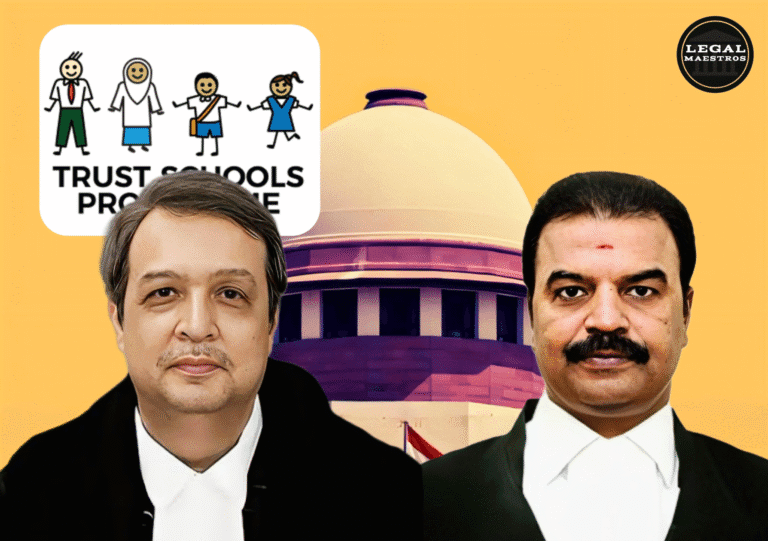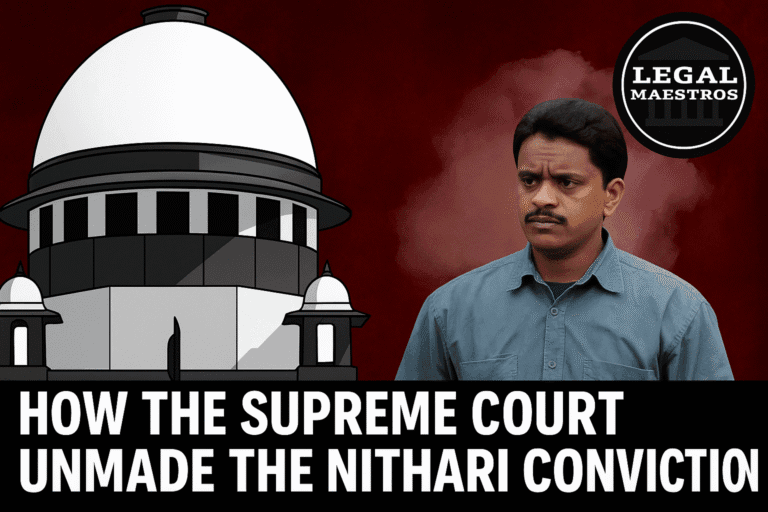
There are several levels of appeal and review in the Indian court system, which makes sure that everyone may get justice. The Special Leave Petition (SLP) under Article 136 of the Constitution of India is an important procedural instrument.
It lets the Supreme Court consider appeals against any court or tribunal’s decision, decree, or order. But there are times when these kinds of petitions are dropped, and the person who filed them is free to go back to lower courts.
A panel of Justices Ujjal Bhuyan and Manmohan ruled Danish Zaheer Siddiqui v. State of Maharashtra on June 17, 2025. This was the main point of the case.
For any queries or to publish an article or post or advertisement on our platform, do call at +91 6377460764 or email us at contact@legalmaestros.com.
The Case Facts
The petitioner Danish Zaheer Siddiqui has already approached the High Court of Judicature in Bombay in Writ Petition No. 5898 of 2025. The outcome of the case did not satisfy Siddiqui and he approached the Supreme Court of India by filing a Special Leave Petition (Civil), Diary No. 33024 of 2025.
The judgment of the Supreme Court is not too detailed upon the specific complaint that was raised in the High Court. The manner, in which the case was approached, however, indicates that the petitioner wanted the Supreme Court to reverse or alter the ruling of the Bombay High Court dated June 12, 2025.
The Processes and hearings in the Supreme Court
The case held on 17 along with June 2025 had been heard by the bench of the Supreme Court constituting of Justice Ujjal Bhuyan and Justice Manmohan. Throughout the hearing process petitioner was represented by Senior Advocate Mr. P. D. Naik. A crew of other lawyers came to his defense.
For any queries or to publish an article or post or advertisement on our platform, do call at +91 6377460764 or email us at contact@legalmaestros.com.
A little give and take followed during which the senior lawyer appearing on behalf of the petitioner submitted that he should be permitted to withdraw the SLP.
The ruling doesn’t say why this request was made, but it usually comes from a strategic reconsideration, which might be to submit new facts, fix procedural problems, or seek a better remedy at the High Court level.
The Court let the withdrawal happen and gave the petitioner the freedom to go back to the High Court with the right application.
For any queries or to publish an article or post or advertisement on our platform, do call at +91 6377460764 or email us at contact@legalmaestros.com.
Laws That Apply
Article 136 of the Indian Constitution is the most important part of this case. It gives the Supreme Court the ability to hear appeals via Special Leave Petitions. This freedom, on the other hand, is rare and only used when absolutely necessary.
The Court doesn’t have to accept every SLP that is submitted. In fact, most of the time, they are either quickly rejected or, as in this instance, withdrawn by the petitioners.
The rules for SLPs also let anyone back out at any time until a final order is made. The possibility that the petitioner can appeal to the High Court indicates that he or she cannot be left stranded as a result of failure to seek assistance.
For any queries or to publish an article or post or advertisement on our platform, do call at +91 6377460764 or email us at contact@legalmaestros.com.
This conforms with Article 21 of the Constitution that states that everybody is entitled to access legal redress.
The strategic importance of withdrawal with liberty
In India, there are several reasons why an SLP could want to strategically withdraw. It might let a petitioner:
Make their argument stronger by getting better evidence or reasons.
For any queries or to publish an article or post or advertisement on our platform, do call at +91 6377460764 or email us at contact@legalmaestros.com.
Fix any mistakes committed in the original writ petition’s procedures.
Stay away from a bad decision from the Supreme Court that might limit your future legal possibilities.
Change the way you argue your case depending on what you heard or saw during the top court’s hearing.
For any queries or to publish an article or post or advertisement on our platform, do call at +91 6377460764 or email us at contact@legalmaestros.com.
The Supreme Court’s ruling in this case contains the term “with liberty to approach the High Court with appropriate application,” which is quite important. This implies that the SLP’s dismissal does not stop the petitioner from seeking relief elsewhere and keeps the cause of action legally alive.
Judicial Discretion and Principles Upheld
The judgment reveals that the supreme court tends to be very conservative in exercising their judicial powers.
Court did not dismiss the petition and does not attempt to control the exercise of the right of the petitioner to go where s/he can get his/her best help. It shows a bigger idea of the rule of law, which says that courts should help people get justice instead of getting in the way.
For any queries or to publish an article or post or advertisement on our platform, do call at +91 6377460764 or email us at contact@legalmaestros.com.
The Court also follows the idea of natural justice, which means that no one may be denied the chance to be heard or to have a fair solution.
What the Order Means
Although the case itself appears procedural and not really very important, it raises very essential questions regarding how an attorney is to conduct himself/herself in court and how he/she is to prepare a case.
The move of the petitioner to withdraw can suggest that he/she is redefining his/her strategy of action, or there is likelihood that the case will be successful in the High Court.
For any queries or to publish an article or post or advertisement on our platform, do call at +91 6377460764 or email us at contact@legalmaestros.com.
The earlier example set by the judgment will also dictate the fate of those and the attorneys who have engaged in litigations, and might opt to void the SLPs just to re-produce them in front of the High Courts presented in newer revelations, facts, or situations.
It indicates that the effective use of court time and resources is balanced with people’s right to seek justice.
The Supreme Court’s treatment in Danish Zaheer Siddiqui v. State of Maharashtra is a great illustration of how judges should be careful and follow the rules.
For any queries or to publish an article or post or advertisement on our platform, do call at +91 6377460764 or email us at contact@legalmaestros.com.
The SLP’s withdrawal with the option to go to the High Court again shows how the Indian court system is set up in layers and what rights people have in that system. It also shows a bigger judicial system where the doors of justice are always open and where procedure and content work together to protect the Constitution’s core values.
This case may not be very important in the grand scheme of things, but it shows how justice in India is complex, planned, and adaptable. The petitioner’s hope is still alive since they may go back to the High Court. This shows that the Supreme Court is not simply a court of law, but also a court of justice.






![Research Assistantship @ Sahibnoor Singh Sindhu, [Remote; Stipend of Rs. 7.5k; Dec 2025 & Jan 2026]: Apply by Nov 14, 2025!](https://legalmaestros.com/wp-content/uploads/2025/11/Gemini_Generated_Image_s0k4u6s0k4u6s0k4-768x707.png)
![Karanjawala & Co Hiring Freshers for Legal Counsel [Immediate Joining; Full Time Position in Delhi]: Apply Now!](https://legalmaestros.com/wp-content/uploads/2025/11/Gemini_Generated_Image_52f8mg52f8mg52f8-768x711.png)